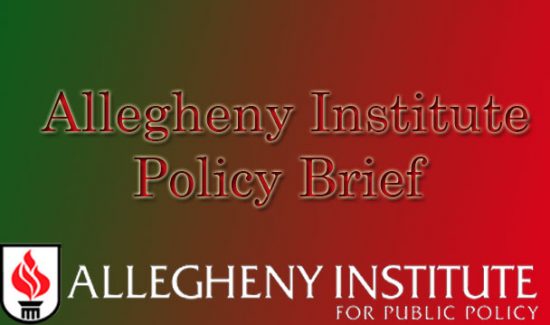The Fed: We’re Doing it Again
No sooner had the housing market bubble burst in 2008, when the culprit for the real estate bubble was identified, in part, as the teaser interest rates.
Teaser interest rates, also called adjustable rate mortgages, are very low short term interest rates which reset to more normal longer term rates after a period of time.
These teaser interest rates allegedly enabled people to buy a type or size of home beyond that which they ordinarily might have afforded due to very low initial monthly payments.
When these interest rates reset after the "teaser period ended", it became apparent that many people who had previously acquired homes were no longer able to afford them.
In the present day, Federal Reserve chairman, Ben Bernanke, recently commented that consumer spending is growing relatively weakly in the United States and that interest rates must be kept low to encourage consumer spending.
Since the housing bubble, the Federal Reserve and the Department of the Treasury have implemented a significant number of policies aimed at keeping interest rates relatively low. Some of the weapons used in their arsenal include Quantitative Easing I, Quantitative Easing II and Operation Twist.
The intent of Quantitative Easing and Operation Twist, almost $3 Trillion to date, were to help to stimulate consumer spending and to rejuvenate the economy. Despite these efforts and subsequent record low interest rates, unemployment has remained well in excess of 8%.
When combined with federal government deficits in excess of $1 trillion per year and a very loose monetary policy, it would seem that consumer spending should be increasing very rapidly and unemployment dropping. Under more normal times, one would expect that inflation fears would surface after $3 Trillion was injected into the monetary system.
The fiscal and monetary policies have been so relaxed in recent years, that many members of the Federal Reserve, when the issue of Quantitative Easing 3 was mentioned, expressed their reservation about continued monetary easing due to their fears of inflation.
With the tremendous amount of additional debt that has been created, the sovereign debt crisis in Europe, the debt write down in Greece, and the inherent risks of additional deficit spending, it seems very unlikely that interest rates would remain as low as they are today under more normal economic times in which repayment risk were added to interest rate risk.
Normally, the risk premium associated with debt implies that interest rates would increase when repayment risks increase. The risk of default would also cause an increase in interest rates. However such default risk premiums have not happened in this current economic period due to this deliberate market intervention by the Federal Reserve.
Perhaps the dichotomy between the low interest rates, the lack of increase in consumer spending, and the Federal Reserve’s traditional efforts of fighting a recession or a depression are indicative that such loose monetary policies are misguided in the current economic time.
The Federal Reserve is using historical monetary policy tools to combat the economic downtown in much the same way as our government began fighting World War II by using the lessons it learned from World War I. The conflict in World War II at Pearl Harbor clearly indicated that the era of the battleship as a primary weapon for a Navy might now be in question. Additionally, to have attempted to fight World War II in Europe with the trench warfare as was done in World War I would have been equally folly.
In the same vein, it is not logical to use the tools of the first depression for this current economic malaise. The market and consumers are telling the Federal Reserve that the monetary policy which got us into this current disaster may in fact be the same monetary policy that will keep us from recovering.
The concern of many business leaders and consumers is the uncertainty and lack of direction on the part of Congress and the President in dealing with what is clearly understood by all of us to be reckless deficit spending. Until Congress and the President decide that they will get our fiscal house in order, the willingness of either business people or consumers to spend will remain in jeopardy.
Merely offering extremely low interest rates is not going to remove the uncertainty in the minds of consumers to encourage spending.
Just as teaser interest rates expiring burst the housing bubble, the teaser interest rates of the Federal Reserve with Quantitative Easing 1, and 2, as well as Operation Twist will merely encourage Congress and the President to continue spending. However once the market demands a market rate risk-adjusted interest rates for our national debt then the US budget crisis will explode which even more uncontrollable budget crisis and larger deficits.
The Federal Reserve must allow interest rates to stabilize at the risk-adjusted rates to help force financial discipline on our government. Monetary policy can assist in an economic recovery but when that policy "enables" a government to be irresponsible with deficits, the monetary policy and the Federal Reserve become equally as irresponsible as Congress and the President.
If the Federal Reserve and our elected leaders are serious about this recovery, they must allow interest rates to stabilize at risk adjusted rates.
Once interest rates are allowed to stabilize at risk adjusted rates, government will be forced to deal with the deficit. Consumers and businesses will then realize that government is serious about getting its house in order and the recovery will begin.
Should the Federal Reserve continue to interfere with the interest rates markets, the Quantitative Easing bubble bursting will lead to a depression unlike anything this nation has ever seen.
Col. Frank Ryan, CPA, is a retired Marine Reserve Colonel and specializes in corporate restructuring and lectures on ethics for the state CPA societies. He has served on numerous boards of publicly traded and non-profit organizations. He can be reached at [email protected]




